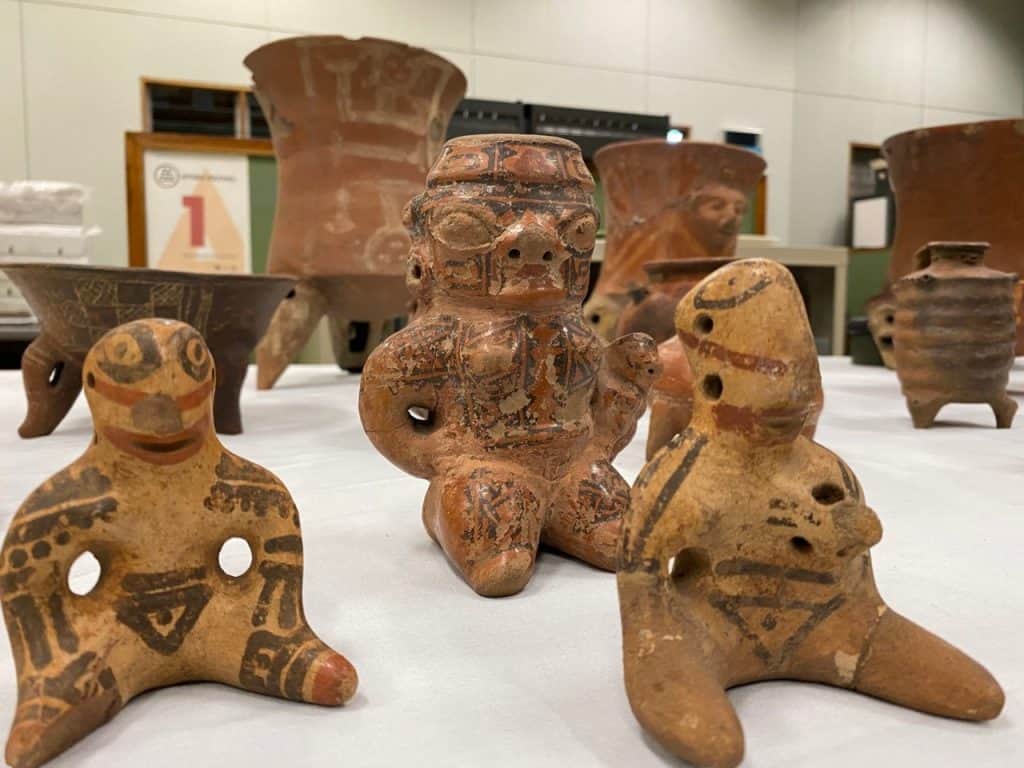Guatemalan security forces seized on Friday 143 stolen pre-Hispanic Mayan artifacts from a gang possibly linked to two Americans living in the country, arrested in November for trafficking archaeological goods, said the Attorney General’s Office.
“These archaeological pieces could possibly be linked to the couple of U.S. citizens Stephanie Allison Jolluck and Giorgio Salvador Rossilli,” said to journalists the spokesman of the Public Prosecutor’s Office, Moisés Ortiz.
He explained that the relics were found in a house that was raided in an operation that included six proceedings in the departments of Guatemala, where the capital of this nation is located, and Sacatepéquez, where the colonial Antigua Guatemala (southwest) is located.
Jolluck, 49, was arrested on November 11 at Guatemala City’s La Aurora International Airport when she attempted to leave the country with two pieces of Mayan stone carvings.
After the arrest, a court provisionally released her, but prohibited her from leaving Guatemala and from going near places where archaeological objects are sold. Three days later she was recaptured, this time with Rossilli, 62 years old, when in a vehicle they were transporting another 166 pieces.
The investigation continued and on the 17th of that same month her home in Antigua was raided, where “722 pieces of different sizes and materials such as jade and basalt” and “500 archaeological pieces (of stone) of small dimensions” of pre-Columbian origin were found, according to the agency.
Ortiz explained that this Friday’s actions were “following an investigation for the possible trafficking of national treasures”. “The evidence located up to this moment will contribute to the strengthening of the investigation”, he added.
The relics will be delivered to the Direction of Registration of Cultural Goods of the Ministry of Culture for their respective safekeeping. The official did not specify the period nor the region to which the seized objects belong.
The Mayan culture had its greatest splendor in the so-called classic period (250-900 A.D.), until it went into decline in the post-classic period (900-1200 A.D.) and covered the Mesoamerican area that includes the south of Mexico, Guatemala, El Salvador, Honduras and Belize.

